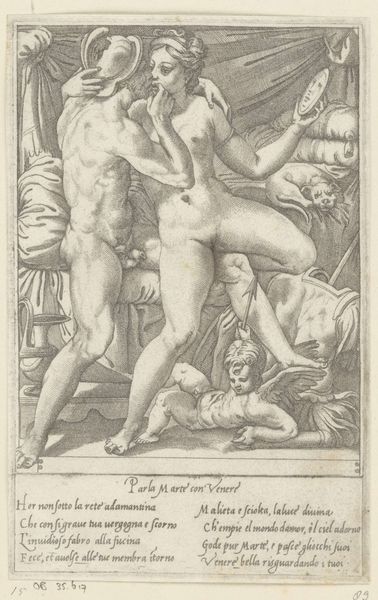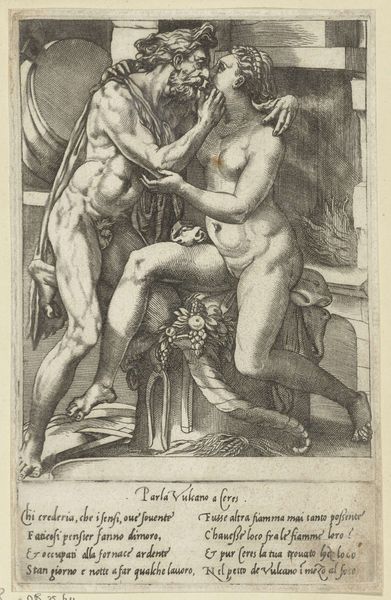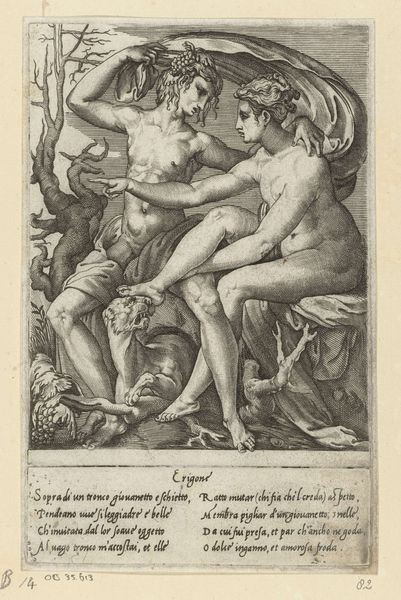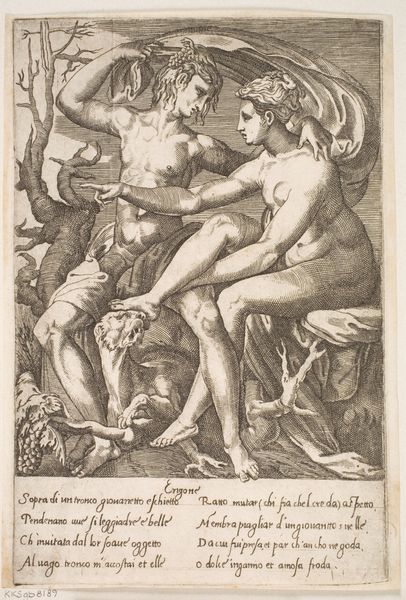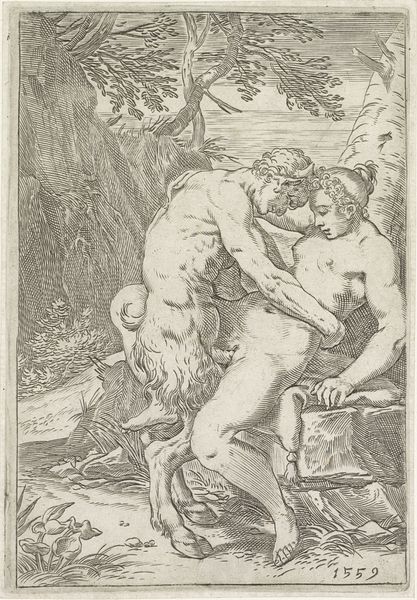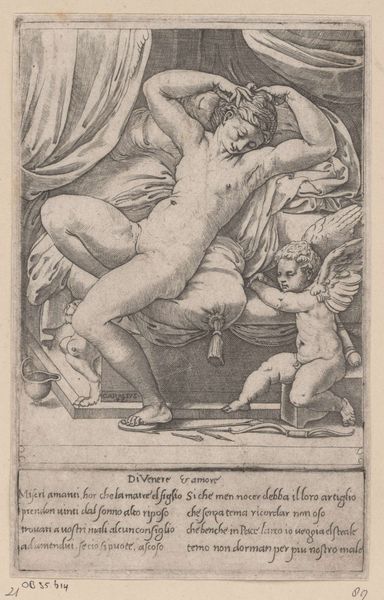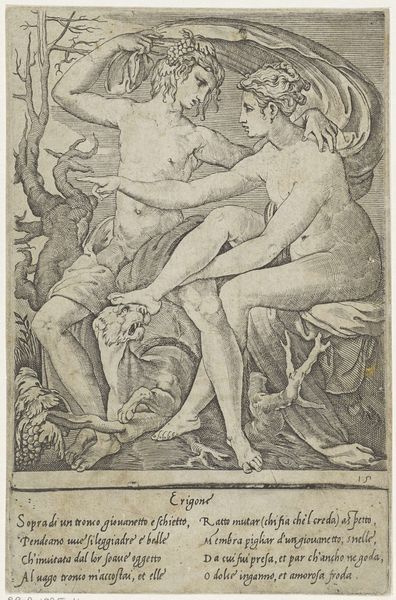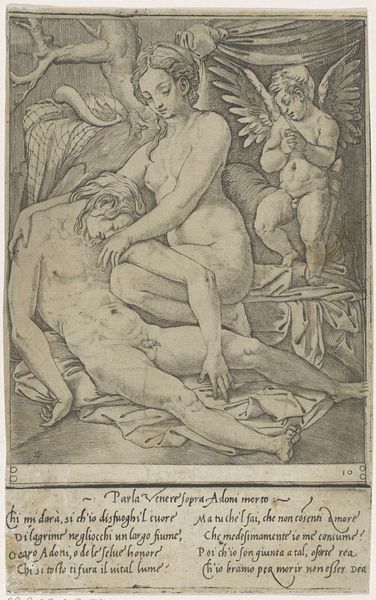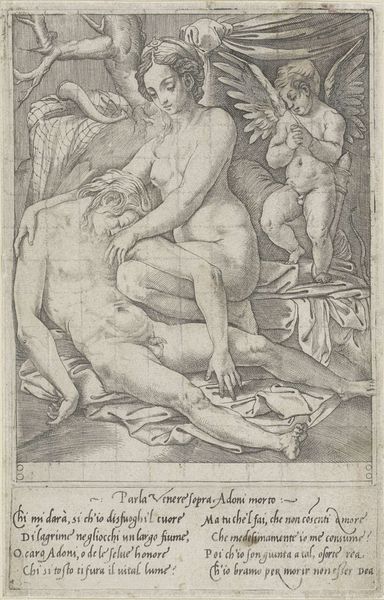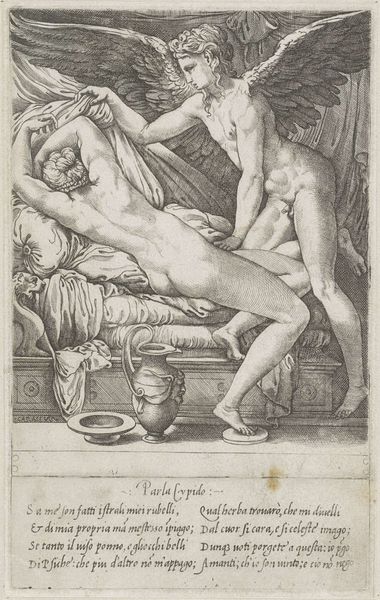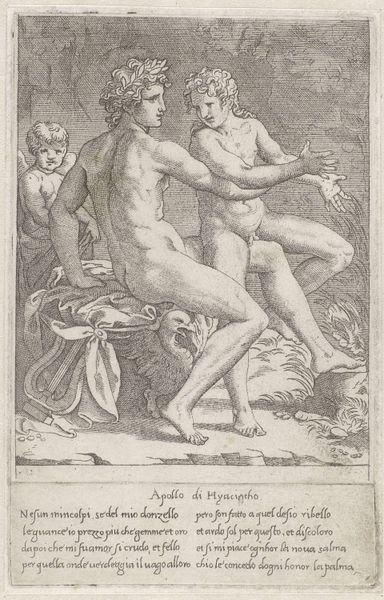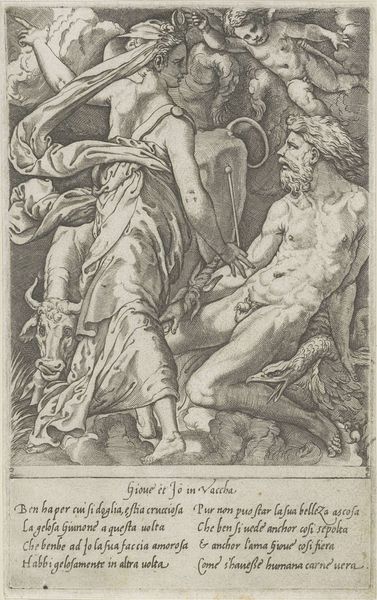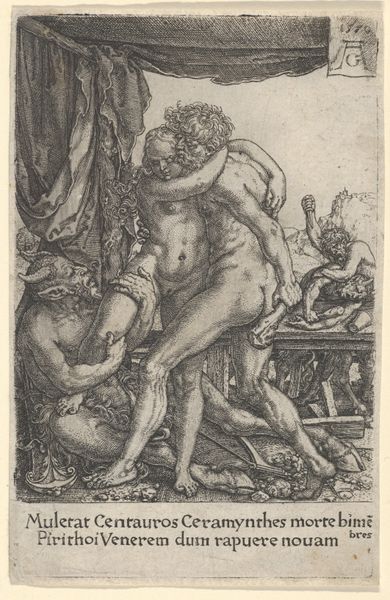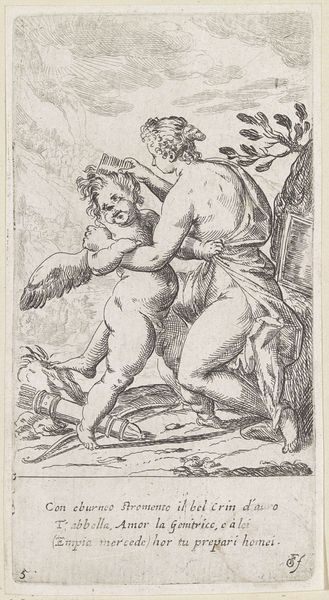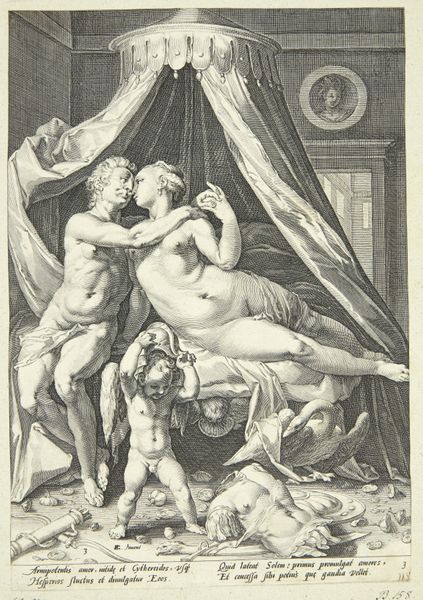
print, engraving
# print
#
mannerism
#
figuration
#
history-painting
#
nude
#
engraving
Dimensions: height 212 mm, width 134 mm
Copyright: Rijks Museum: Open Domain
Editor: So, this is Giovanni Jacopo Caraglio’s “Loves of the Gods,” created sometime between 1515 and 1565. It’s an engraving. What immediately strikes me is the sensuality, almost theatricality of the figures. How do you interpret this work, especially given its historical context? Curator: As a print, it participates in a wider circulation of images and ideas, impacting consumption habits of the emerging bourgeois class. These reproductive engravings democratized access to imagery previously confined to elite circles. What labor practices were involved in creating this engraving, and what societal norms did they perpetuate or challenge? Editor: I hadn't considered the democratization aspect! So, thinking about labor, what about the physical act of engraving, the skilled artisan carefully etching the design, how does that translate into a new appreciation of craft? Curator: Precisely. The skill and time involved in creating this intricate design suggests a complex production process. Furthermore, the content itself—the "Loves of the Gods"—reflects broader social concerns with mythology and humanism. What role did the patron play in influencing the material choices and iconography of this piece, impacting their consumer desires? Editor: That's a great point. Patronage directly impacts production, which then informs reception. So it goes from the selection of materials to the subject matter! Curator: Exactly. This intertwining shows the dynamic relationship among maker, consumer, and subject. Investigating the cost of such an object helps understand this piece's purpose and how it affected the viewer's values and purchasing abilities, contributing to society's commercial environment. Editor: This materialist reading offers a compelling approach, framing the print as part of broader socio-economic system of its time. Thanks for providing your expertise and sharing this approach. Curator: Indeed, understanding its function as a produced object enriches our understanding.
Comments
No comments
Be the first to comment and join the conversation on the ultimate creative platform.
